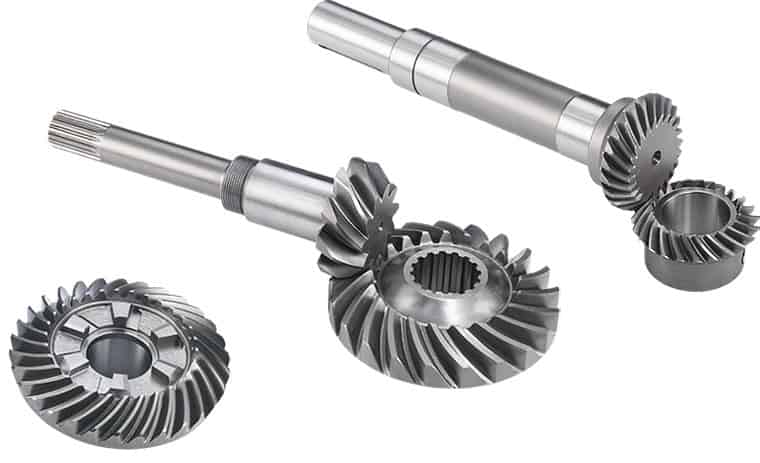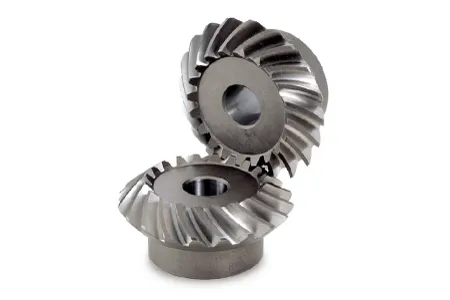Product Description
Small-sized, ultra-lightweight type of our Miter Gear Box. High-performance spiral bevel gear is used to enable silent and high transmission operations. The shaft material employs anti-corrosive stainless steel. Universal mounting type that can be mounted in any direction.
How Does A Compact and Lightweight Gearbox Work?
Corrosion Resistant Aluminum Alloy Bevel Gearboxes Videos For Customers Orders
* Indonesia customer Lightweight aluminum housing Small-sized Mini right angle drive 1:1 gearboxes Video:
* Canada clients miniature right angle bevel gearboxes 1:1 ratio/small right angle gear drives Video:
* Lithuania client 1:1 ratio JTA15 lightweight small aluminium miniature right angle gearbox Video:
* Colombia client light duty aluminum bevel gear box 1 to 1 ratio,aluminum body gearbox 3 shafts Video:
* Belgium client lightweight aluminum alloy right 90 spiral bevel gear drives gearbox 1:1 ratio Video:
* Israel customer 3 shaft gearboxes 1:1 ratio 3 way bevel gear boxes 20mm shafts 90 deg gearbox Video:
* 16567X3, registered Capital 500000CNY) is a leading manufacturer and supplier of Screw Jacks (Mechanical Actuators), Bevel Gearboxes, Lifting Systems, Electric Linear Actuators, Gearmotors and Speed Reducers, and Others Linear Motion and Power Transmission Products in China. We are Alibaba, Made-In-China and SGS (Serial NO.: QIP-ASI192186) audited manufacturer and supplier. We also have a strict quality system, with senior engineers, experienced skilled workers and practiced sales teams, we consistently provide the high quality equipments to meet the customers electro-mechanical actuation, lifting and positioning needs. CHINAMFG Industry guarantees quality, reliability, performance and value for today’s demanding industrial applications.
Website (English): screw-jacks
Website (English): screw-jacks
Website (Chinese): screw-jacks
/* March 10, 2571 17:59:20 */!function(){function s(e,r){var a,o={};try{e&&e.split(“,”).forEach(function(e,t){e&&(a=e.match(/(.*?):(.*)$/))&&1
| Application: | Motor, Electric Cars, Motorcycle, Machinery, Agricultural Machinery, Car, Metrology and Test Engineering |
|---|---|
| Function: | Distribution Power, Change Drive Direction, Speed Changing, Speed Reduction, Speed Increase, Transmission |
| Layout: | Right Angle Drive |
| Hardness: | Hardened Tooth Surface |
| Installation: | Universal Mounting |
| Step: | Single-Step |
| Customization: |
Available
| Customized Request |
|---|

How do you ensure proper alignment when connecting miter gears?
Proper alignment is crucial when connecting miter gears to ensure smooth and efficient power transmission. Here are some key steps to ensure proper alignment:
- Shaft Alignment: Start by ensuring that the shafts on which the miter gears are mounted are properly aligned. Misalignment of the shafts can lead to increased friction, premature wear, and reduced efficiency. Use alignment tools such as dial indicators or laser alignment systems to accurately align the shafts.
- Gear Positioning: Position the miter gears in such a way that their axes intersect at a 90-degree angle. This ensures proper meshing of the gears and optimal power transmission. Pay attention to the position of the gears and make any necessary adjustments to achieve the desired alignment.
- Bearing Support: Proper bearing support is essential for maintaining alignment and reducing excessive loading on the gears. Ensure that the bearings supporting the shafts are accurately installed and aligned. Use high-quality bearings suitable for the load and speed requirements of the miter gears.
- Clearance and Backlash: Check for proper clearance and backlash between the teeth of the miter gears. Clearance refers to the space between the mating teeth, while backlash is the amount of play or movement between the gears. Proper clearance and backlash allow for smooth engagement and disengagement of the gears without binding or excessive noise.
- Lubrication: Apply a suitable lubricant to the miter gears to reduce friction and wear. Proper lubrication ensures smooth operation and helps maintain alignment by minimizing heat buildup and preventing excessive wear on the gear teeth.
By following these steps, you can ensure proper alignment when connecting miter gears, resulting in efficient power transmission, reduced wear, and improved overall performance.

What are the variations in miter gear designs and configurations?
Miter gears come in various designs and configurations to suit different application requirements. Here are some common variations:
1. Straight Bevel Gears:
Straight bevel gears are the most basic type of miter gears. They have straight teeth that are cut along the cone surface. Straight bevel gears are widely used and offer efficient power transmission, but they generate more noise and vibration compared to other designs.
2. Spiral Bevel Gears:
Spiral bevel gears have curved teeth that are cut in a spiral pattern along the cone surface. This design helps to reduce noise and vibration, improves load distribution, and provides smoother operation compared to straight bevel gears. Spiral bevel gears are commonly used in high-performance applications.
3. Zerol Bevel Gears:
Zerol bevel gears are similar to spiral bevel gears but have curved teeth with a spiral angle of zero degrees. This results in the teeth being parallel to the gear axis at the point of contact. Zerol bevel gears offer advantages such as reduced tooth thrust, improved tooth strength, and smoother meshing compared to other designs.
4. Hypoid Gears:
Hypoid gears are a variation of miter gears that have non-intersecting and offset axes. The axes of the gears do not intersect but are positioned at an angle to each other. Hypoid gears are commonly used in applications where high torque transmission is required, such as automotive differentials.
5. Skew Bevel Gears:
Skew bevel gears have teeth that are cut at an angle to the gear axis, resulting in a skewed or helical appearance. This design reduces noise, increases tooth contact area, and improves load distribution. Skew bevel gears are often used in applications where smooth and quiet operation is critical.
6. Offset Miter Gears:
Offset miter gears are used when the input and output shafts need to be offset from each other. They have specific tooth profiles to accommodate the offset arrangement while maintaining proper meshing and transmission of rotational motion. Offset miter gears are commonly found in machinery where space constraints or specific design requirements exist.
7. Customized Designs:
In addition to these variations, miter gears can be customized to meet specific application needs. This may involve modifications to the tooth profile, pitch angle, tooth size, or other parameters to optimize gear performance for a particular use case.
In summary, miter gears offer various design and configuration variations, including straight bevel gears, spiral bevel gears, zerol bevel gears, hypoid gears, skew bevel gears, offset miter gears, and customized designs. Each variation has unique characteristics that make it suitable for different applications, allowing for flexibility and adaptability in gear system design.

What is the purpose of using miter gears in mechanical systems?
Miter gears serve several purposes and offer distinct advantages when used in mechanical systems. Here’s a detailed explanation:
1. Change of Shaft Direction:
One of the primary purposes of using miter gears is to facilitate a change in the direction of shaft rotation. When two miter gears with intersecting shafts are meshed together, they allow the transmission of rotational motion at a 90-degree angle. This enables the redirection of power and torque to a different axis, which can be crucial for the functioning of various mechanical systems.
2. Power Transmission:
Miter gears are designed to efficiently transmit power between intersecting shafts. The meshing of the gear teeth ensures a smooth transfer of rotational energy, enabling the transmission of torque and rotational motion from one shaft to another. This makes miter gears suitable for applications where power needs to be transmitted between perpendicular axes.
3. Speed Reduction or Increase:
By using miter gears with different numbers of teeth or by combining them with other gears, speed reduction or speed increase can be achieved. The gear ratio between the miter gears determines the change in rotational speed. This allows for the adjustment of output speed to match the requirements of the mechanical system, ensuring optimal performance.
4. Compact Design:
Miter gears are known for their compact design, making them valuable in applications where space is limited. The intersecting shafts and the conical shape of the gears allow for efficient power transmission while occupying a small footprint. This compactness is particularly beneficial in devices and systems where size and weight constraints are critical factors.
5. Alignment and Torque Distribution:
Miter gears help maintain proper alignment and torque distribution between intersecting shafts. The gear teeth engagement ensures accurate alignment, which is essential for smooth and efficient operation. Additionally, the equal distribution of torque among the teeth of miter gears helps prevent excessive stress on individual gear teeth, promoting longevity and reliability.
6. Applications:
Miter gears find applications in a wide range of mechanical systems, including:
- Power transmission systems
- Automotive differentials
- Mechanical clocks
- Robotics
- Printing machinery
- Woodworking tools
- Camera lenses
In summary, the purpose of using miter gears in mechanical systems is to facilitate a change in shaft direction, transmit power efficiently, achieve speed reduction or increase, maintain a compact design, and ensure proper alignment and torque distribution. These characteristics make miter gears suitable for various applications, contributing to the functionality and performance of mechanical systems.


editor by CX 2023-12-26